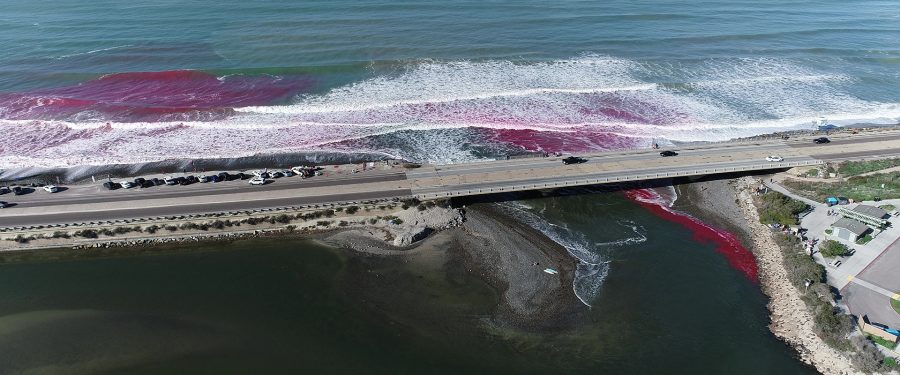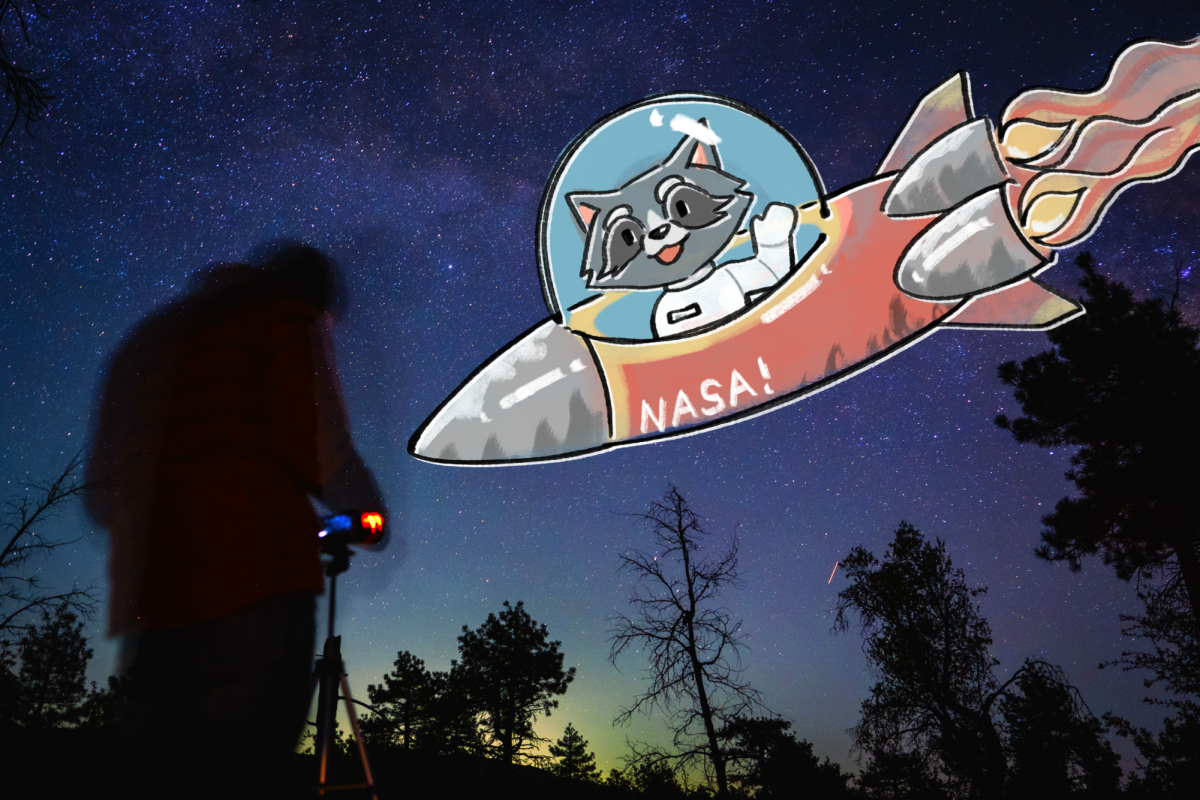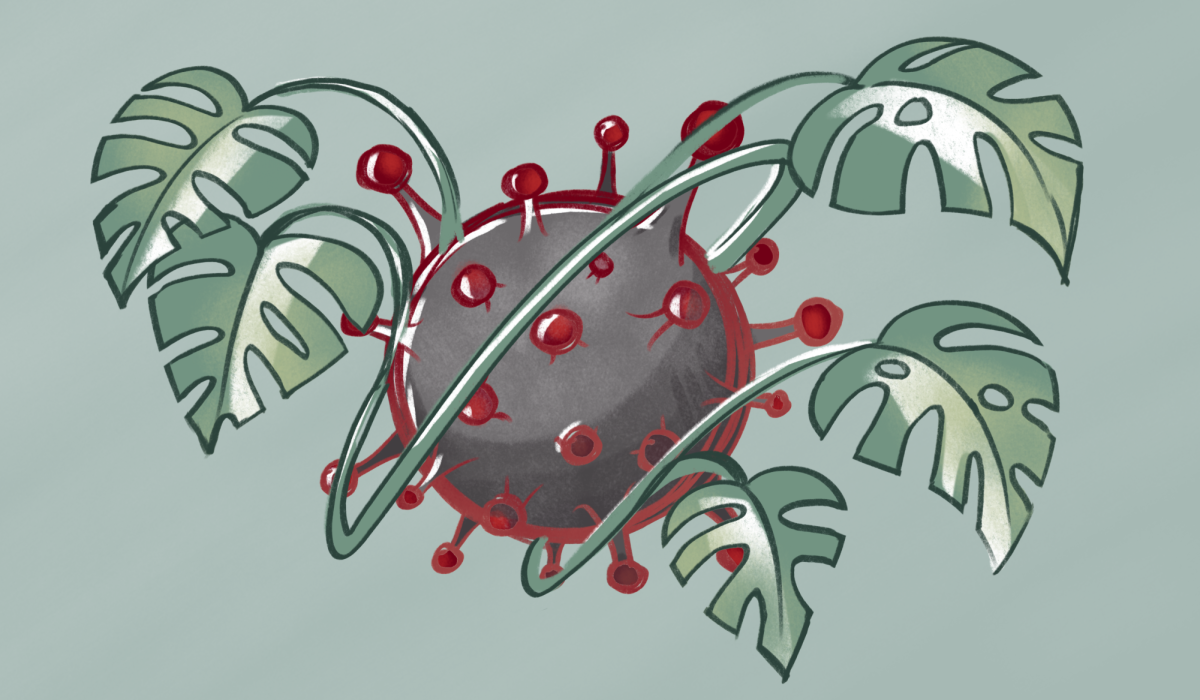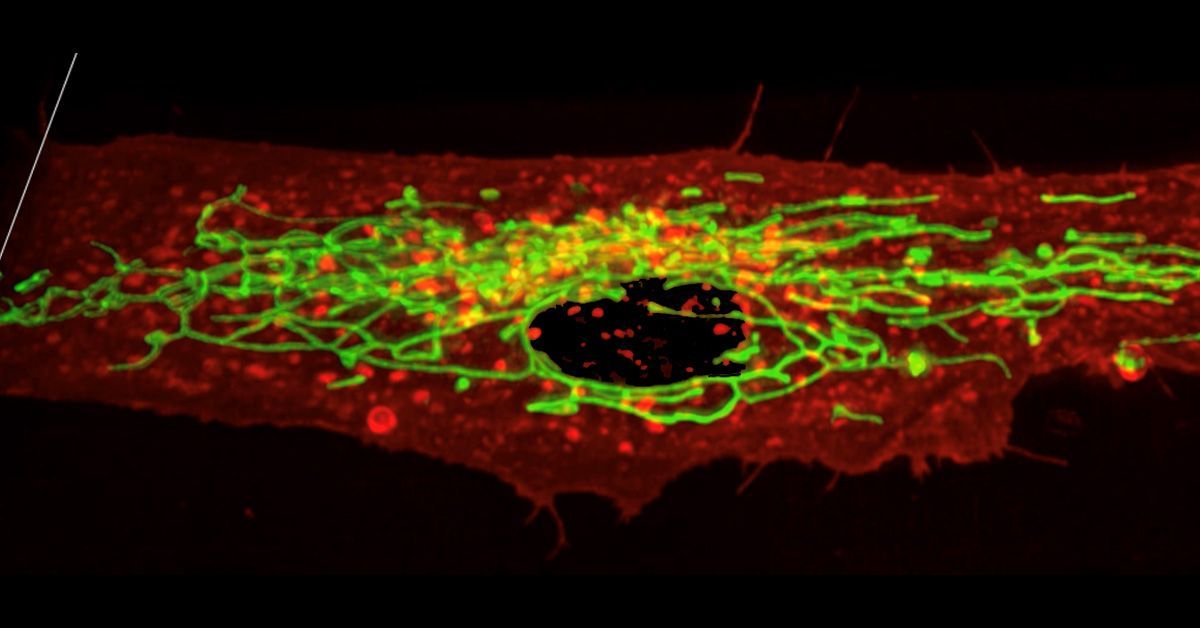UC San Diego’s Scripps Institution of Oceanography has teamed with researchers from the University of Washington to study coastal interactions in La Jolla’s coastal waters at Torrey Pines State Beach and Natural Reserve. The research, conducted by the two institutions, included the release of environmentally-safe pink dye into the ocean last week, which was viewed by January and February beachgoers.
Starting Jan. 20 and continuing into February, the first of three non-invasive dye solutions were released into the ocean for study. The dye allows the San Diego-based team to monitor what takes place when fresh water from river plumes coincides with ocean currents. Such research has not yet been extensively pursued but is significant for discovering interactions between different water densities in the ocean.
Beforehand, scientists acknowledged the importance of rivers and other freshwater bodies in transporting key nutrients and materials into the ocean. Scientists were familiar with the discrepancy in the composition of fresh and coastal waters: the fresh water is warmer and less dense than the cooler, saltier oceans. Although the importance of river flow is known, the specifics regarding freshwater plumes and salt waters, specifically breaking waves, is still unclear. According to the Scripps Institution of Oceanography, “[the] results of this study will provide crucial data for quantifying the spread of sediment, pollutants, larvae, and other important material in the nearshore environment.”
The study was used to study coastal zone interactions between intersecting bodies of water such as rivers and oceans. The study, titled Plumes in Nearshore Conditions is a project fully funded by the National Science Foundation and is meant to study the interactions between freshwater and oceanic salt water, and how freshwater affects the ocean’s surf zone. The research team is led by Scripps Oceanographer and UCSD Associate Professor Sarah Giddings.
Using the Los Penasquitos Lagoon as the ‘small-flowing’ fresh water source, adding the fluorescent dye provided the research team with the opportunity to better discern when the freshwater plumes intersect with the waves. For the following 24 hours, the research team used drones to observe the visible, dye-induced interactions from an aerial view; they also deployed water skis to observe the interactions directly from the water by installing submerged sensors both in the riverbed and ocean to measure wave heights, currents, and other important technical information.
“We will combine results from this experiment with an older field study and computer models that will allow us to make progress on understanding how these plumes spread,” postdoctoral researcher Alex Simpson said.
Simpson, a member of the team, described the potential outcomes of the experiment, explaining that they are “looking forward to seeing how the balance of physical forces — ocean waves competing against river outflow — determine the fate of the estuary water as it enters the coastal ocean on the days that we conduct our field experiment.”
The researchers are using powerful overhead drones to distinguish water interactions, highlighting the technological capabilities available to the team to conduct such an experiment.
Though the experiment itself is unique, the structure of leadership and teamwork has also been significant. Giddings remarked that the project is “bringing together a lot of different people with different expertise, such that I think it’s going to have some really great results and impacts.”
The researchers acknowledge that their experiment findings will be generalized to further discover how smaller, buoyant freshwater flows coincide with larger area saltwater zones across the world. After the third dye release, the team hopes to collect firsthand information on the water-mixing properties and features in the La Jolla area — a similar procedure to other Scripps Institution-based dye research done in Imperial Beach and Huntington State Beach years ago.
Photo courtesy of Scripps Institution of Oceanography.























Emily • Feb 15, 2023 at 3:57 am
I’ve kept up with all of Alex Turner’s social media accounts because I believe he’s the best musician ever. My own fashion sense was similar to his. My recent purchase was this Alex Turner Red Bomber Jacket, which was at the best possible price.